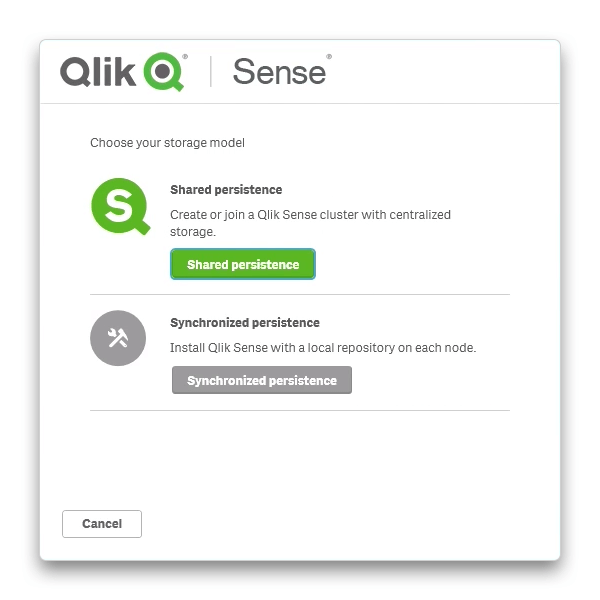Qlik has recently released Qlik Sense version 3.2, their first big release of the year. With it comes the option to choose shared persistence over synchronized (sync) persistence during the installation process. Those running older versions of Qlik Sense will be able to migrate their environment to shared from sync as well. Sync persistence will be deprecated as of Qlik Sense 4.0 which is due to be released later this year.
But wait, what are we actually talking about here…
Shared and Sync Persistence
Shared and sync persistence refers to different storage models that Qlik utilizes to transfer or communicate information with different Qlik nodes within a given site or cluster.
Sync Mode
In the sync model, the central node maintains the master database and applications locally. Each rim node also has its own database (and app folder, depending on the architecture) which receives and transmits updated data and apps to and from the central node periodically.
While it did provide an automatic level of resiliency and availability across nodes, as it turns out, this transference of data between nodes is not always ideal in every given deployment architecture. Enter shared persistence.
Shared Mode
The shared model takes a centralized approach to storage rather than distributed. With shared persistence there is only one version of the database in use at a given time. Applications are stored within the same shared folder accessed by all nodes. Unlike sync, the shared database and the applications are not required to be located on a node running Qlik, which opens up more options for your availability and backup strategy.
Shared persistence for Sense is still in its early stages, however, it has been available with some custom configuration since version 3.1.
 Have Bardess help to develop a sync-to-shared migration strategy
Have Bardess help to develop a sync-to-shared migration strategy
Important to note that with the release of 4.0 later this year Qlik will no longer be offering sync persistence as an installation option. Talk with your Bardess consultant to develop a sync to shared migration strategy or initial deployment architecture for shared persistence.

 Have Bardess help to develop a sync-to-shared migration strategy
Have Bardess help to develop a sync-to-shared migration strategy 